2022 | We celebrate 30 years Fraunhofer IAP!
The Fraunhofer IAP has developed rapidly in 30 years. Here we tell you where we come from and where we are going.
The Fraunhofer IAP has developed rapidly in 30 years. Here we tell you where we come from and where we are going.
The Fraunhofer IAP turns THIRTY. What will the next 30 years bring?
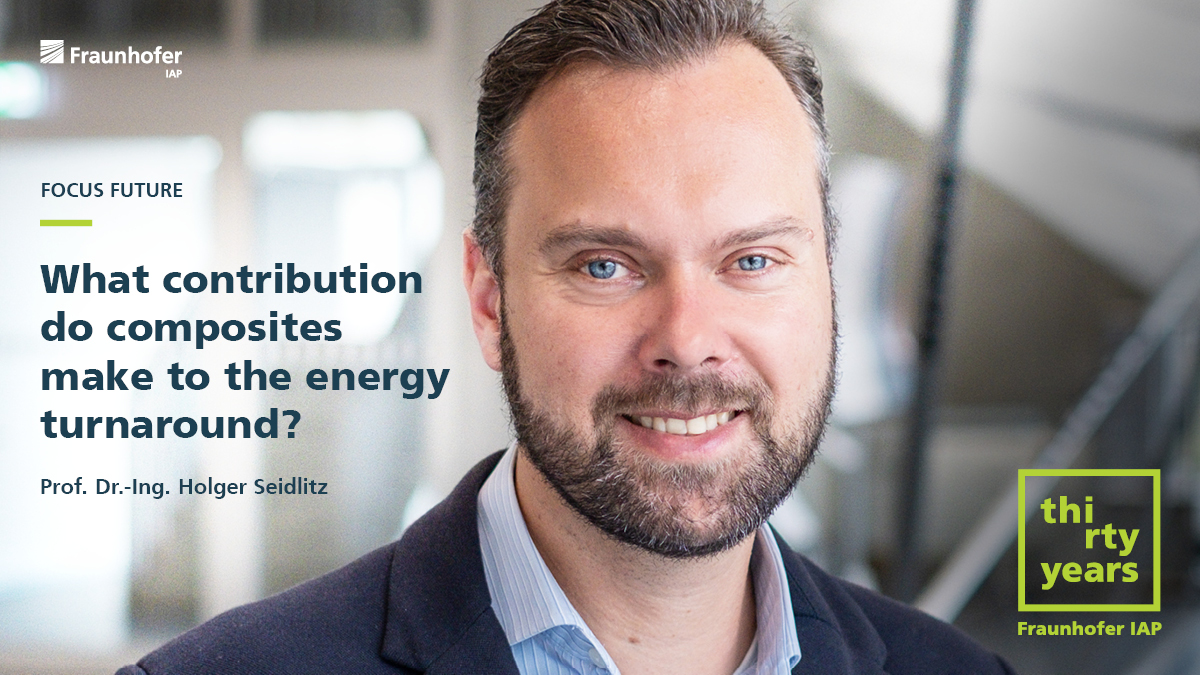
Lightweight design systems will benefit decisively from the increasing use of composites in the future and thus make an important contribution to completing the energy and mobility turnaround. Due to their low mass, combined with their high strength and stiffness properties and enormous design freedom, they are ideally suited to the production of particularly energy efficient structures with a high functional density. For example, it is comparatively easy to integrate additional optical and electronic functions in the components and thus implement systemic concepts. Holistic developments, which must above all include recovery and recycling strategies for end-of-life scenarios, will enable more sustainable products in the fields of energy technology, mobility and mechanical engineering. The global megatrends of digitalization and artificial intelligence, decarbonization and biologization of technology will further drive these developments and spur the establishment of a stringent sustainable circular economy.
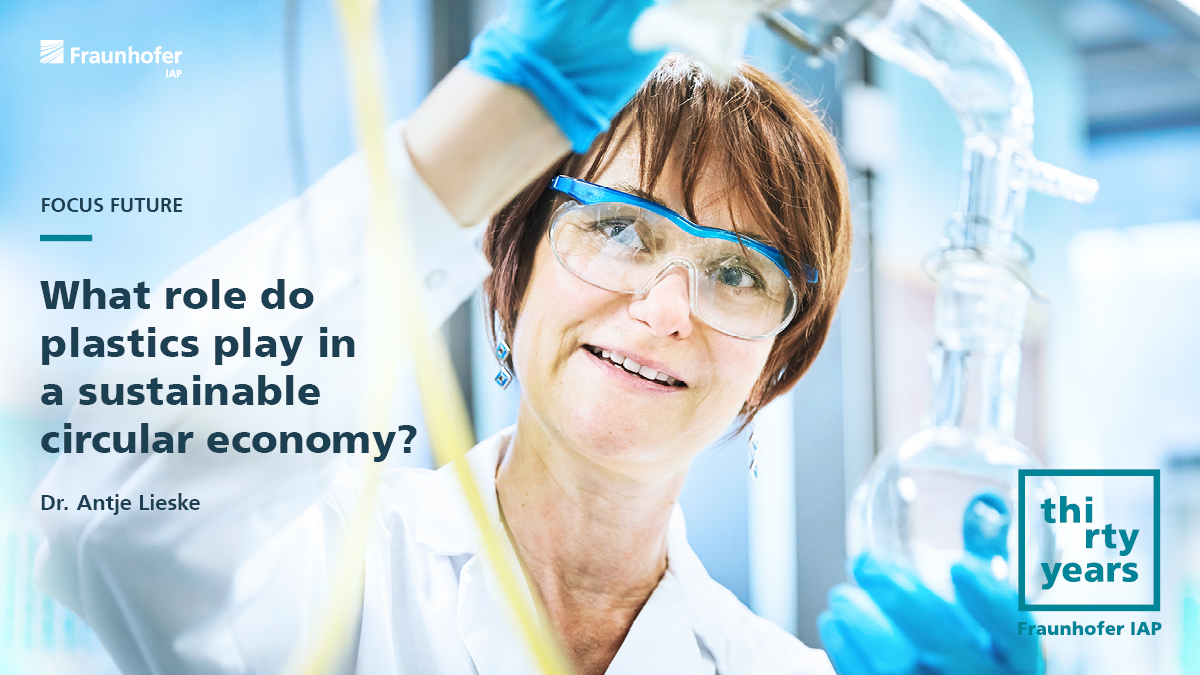
Life without plastics is hardly conceivable today. They make our lives more comfortable and safer. But large quantities end up in the trash or are incinerated. Only a small proportion is reused as recyclate in the production of new plastic products.
In the future, plastics will be obtained from non-fossil sources such as biomass or CO₂ in a sustainable circular economy. They will be perceived and treated as valuable by consumers and industry. When they have fulfilled their purpose in a “life“, they will be collected by type in digitized deposit and sorting systems. From this “waste“, next-generation processing plants will extract raw materials that are used to produce new plastic products The circle is closed.

At first glance, there is plenty of water in Germany. In the course of climate change, however, there have been long periods of drought in recent years. Soils have dried out, forests have been stressed by the dryness, and trees have died. Therefore, we need to adapt the future use and purification of water. Conventional optimization strategies that are mainly focused on the reduction of the cost of water purification will not be sufficient. The resource water must be thought of as a whole. For example, limits for water pollution must be tightened and wastewater must be understood in the future as a source for the recovery of valuable substances and energy. At Fraunhofer IAP, we are actively contributing to the transformation of water purification: We develop new membranes for sustainable and targeted recovery of water and valuable substances such as nitrates and phosphates for reuse in agriculture.
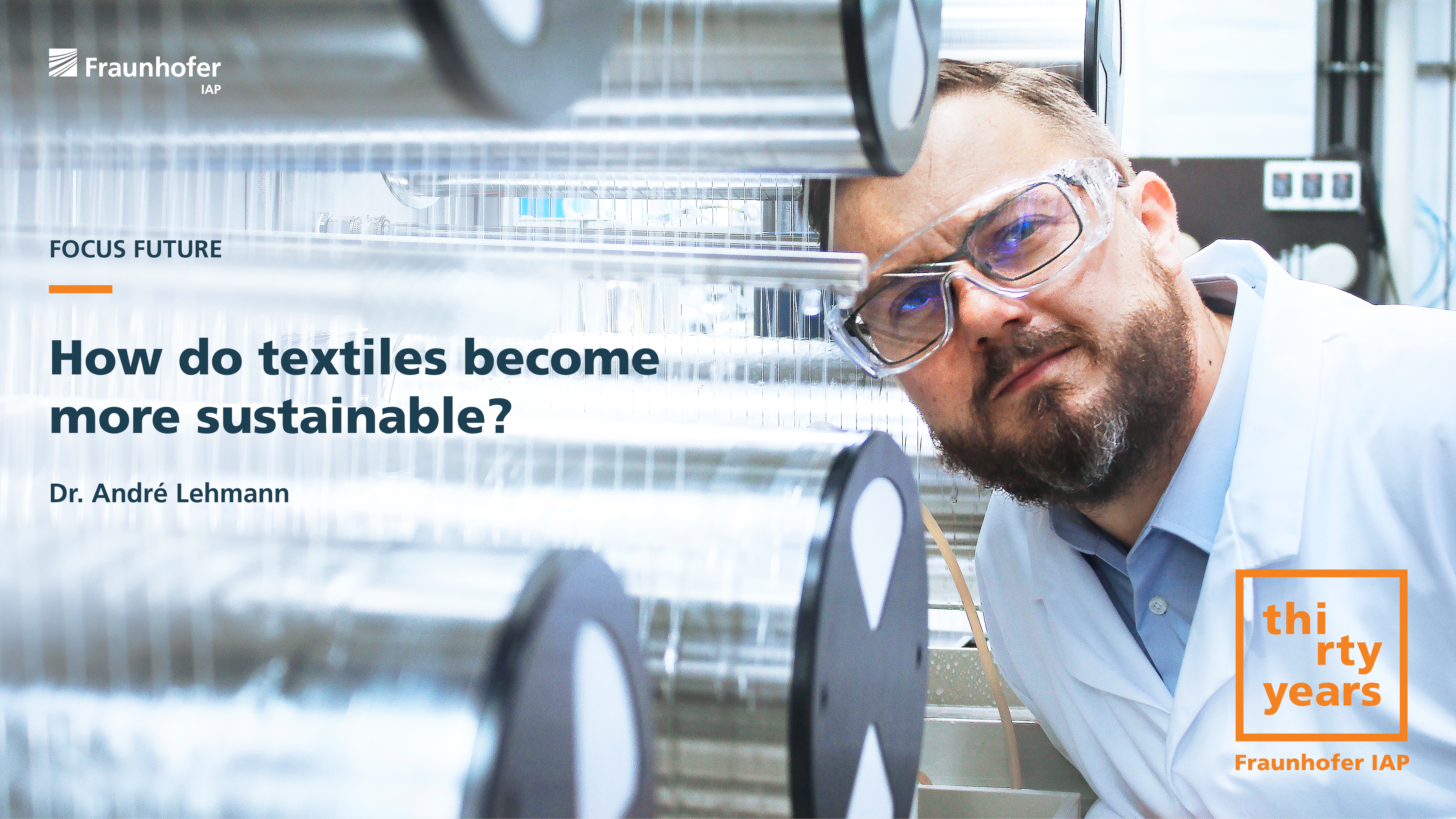
Sustainability in the textile industry is becoming increasingly important and is demanded by the market. Cellulosic man-made fibers such as viscose or lyocell fulfill precisely these requirements and can thus hold their own against other synthetic man-made fibers. Currently, various alternative processes for the production of cellulosic fibers are on a pilot scale, in which the Fraunhofer IAP is involved as a development partner. I am convinced that in 30 years a European cellulosic staple fiber will be established on the market, in the development of which the Fraunhofer IAP was significantly involved.
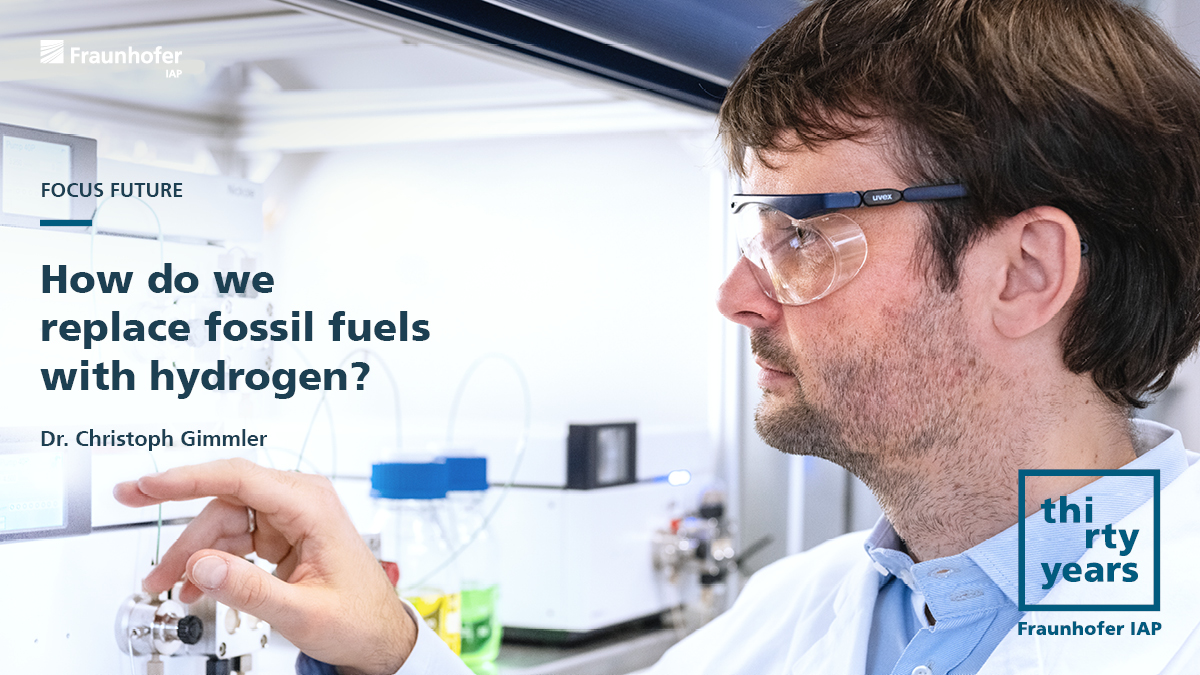
Hydrogen will be a central component of the energy transition and decisively drive the decarbonization of society and industry. The production of hydrogen by electrolysis on a large scale, and also its use as a raw material in chemical processes or for electricity generation in fuel cells, requires more efficient catalysts with smaller amounts of rare and therefore expensive precious metals such as platinum or iridium compared to today.
At Fraunhofer IAP, we are developing and testing more robust, long-lasting catalysts with the smallest possible amounts of precious metals, which are already comparable in performance to common commercial materials. So that we will still be able to see the light in thirty years' time.
to the department "Nanoscale Energy and Structure Materials"
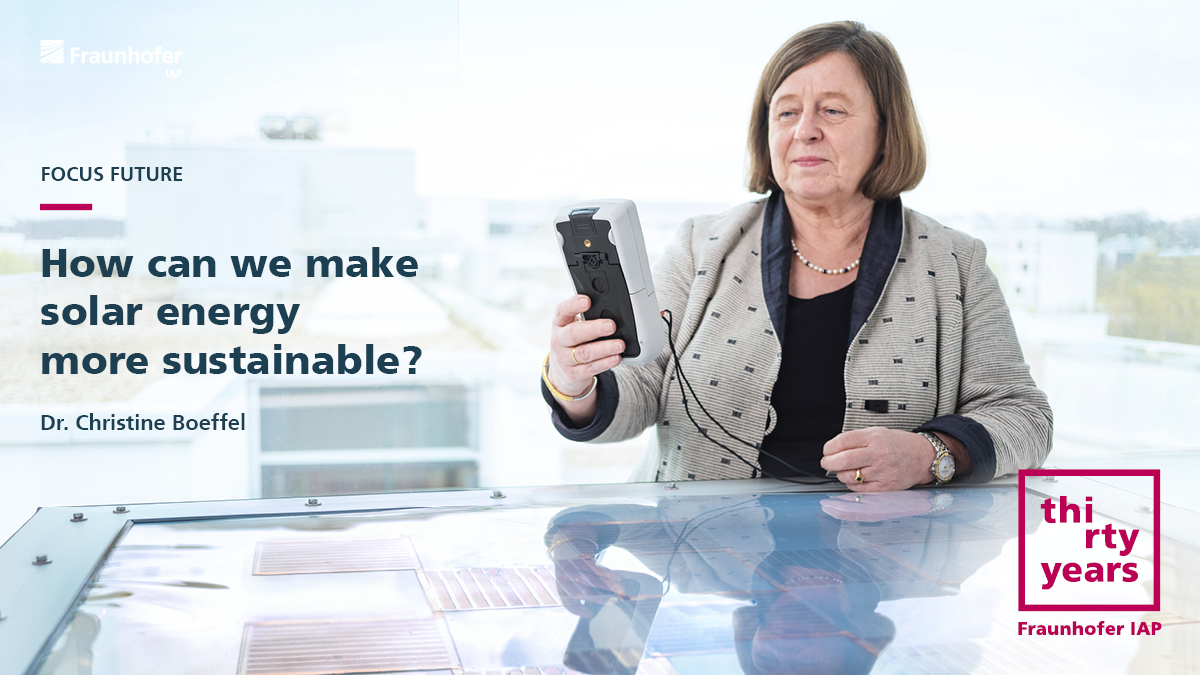
In the European "Green Deal", the reduction of CO2 emissions is a central goal. To achieve this, energy generation should be as resource-efficient as possible, using sun and wind. However, the production of already established silicon-based solar cells requires a high energy input and the use of critical raw materials. The Fraunhofer IAP is working on an alternative with partners from industry and research in Europe. They are producing printed solar cells based on organic and inorganic-organic raw materials. Such polymer and hybrid materials allow the application of efficient printing technologies that can produce solar cells with a significantly lower carbon footprint. The challenge here is to accomplish a lifetime and performance comparable to conventional systems. Successes have already been achieved on a laboratory scale. Scaling up to processes suitable for industrial use is the task we will be tackling at Fraunhofer IAP in the coming years.
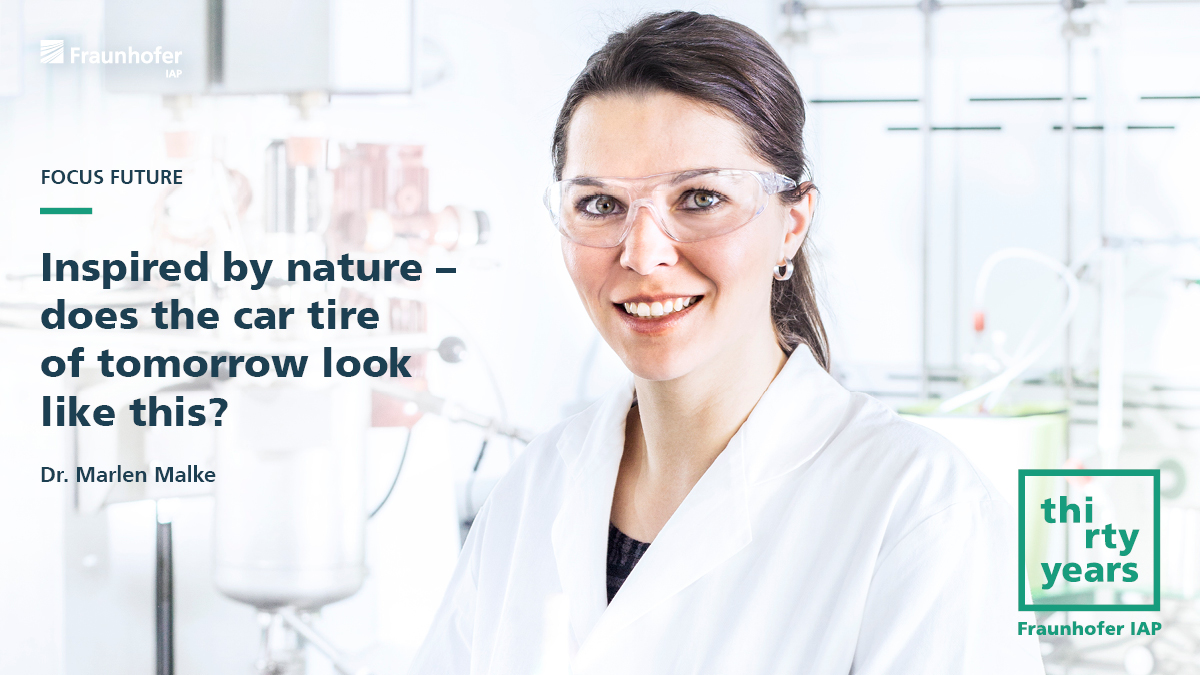
Natural rubber from rubber trees, with its excellent abrasion properties, is very well suited for the extremely durable treads of truck tires. But the use of the natural raw material brings problems with it: fungal infestations of rubber trees endanger their existence, and its cultivation areas are severely limited by the climatic conditions required. Both of these factors limit the security of supply. Synthetically produced rubber has so far failed to match its natural counterpart in terms of abrasion behavior. We therefore set ourselves the challenge of understanding the fundamentals of the unique mechanical properties of natural rubber and transferring them to a synthetic product. The result is Biomimetic Synthetic Rubber "BISYKA", which even surpasses the properties of natural rubber. Tires based on "BISYKA" show 30 % less abrasion as well as better rolling resistance than conventional products. The use of Big Data technologies, artificial intelligence as well as energy-efficient synthesis processes will advance the optimization and further development of "BISYKA" rubber in the future. Our goal at the Fraunhofer IAP: to get a car tire rolling with less abrasion and thus reduce the distribution of microplastics into the environment.
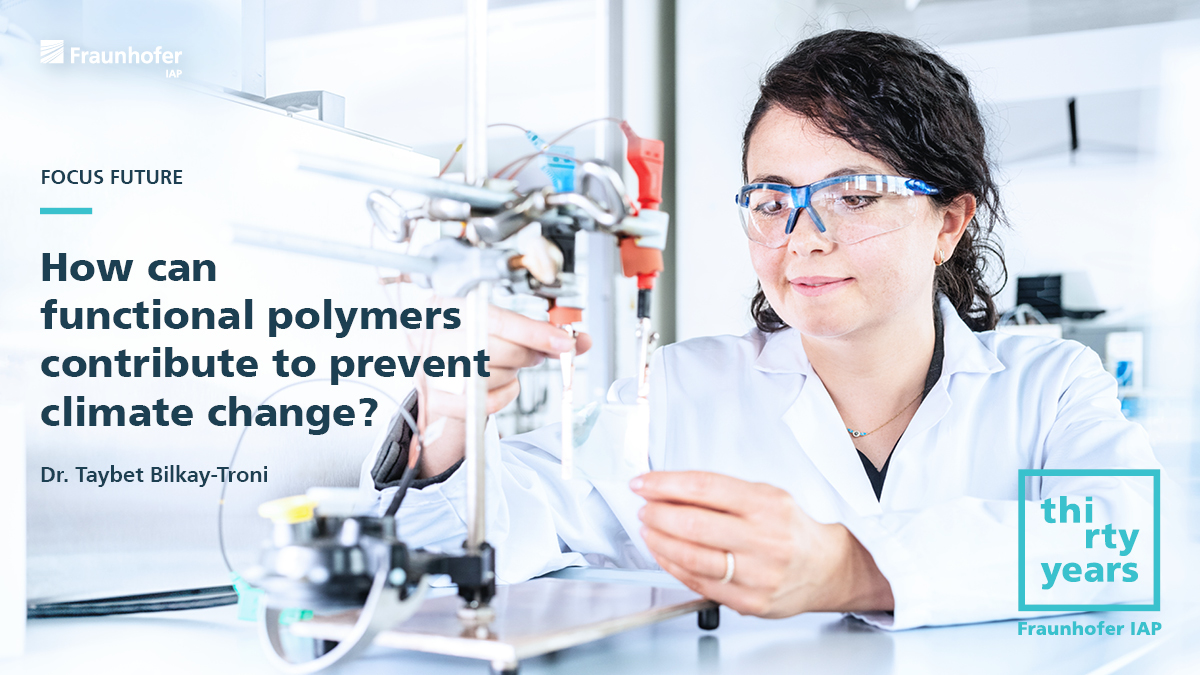
To achieve climate targets, an energy transition is essential. "Green hydrogen", produced by the electrolysis of water and using renewable energy sources, plays a crucial role as a sustainable energy carrier. However, this requires optimization of previously used systems for the production and use of hydrogen. New tailor-made membranes, which are an important component of electrolysis and fuel cells, show great potential in terms of performance, cost-effectiveness and sustainability. In the field of proton-conductive membranes, we have already developed a polymer that exhibits conductivity comparable to commercial products (e.g. Nafion 212 ®), while being more environmentally friendly and cost-effective. With the development of new functional polymers, we are making a significant contribution to the technologies of the energy transition and thus to achieving the climate targets. Today and in 30 years.
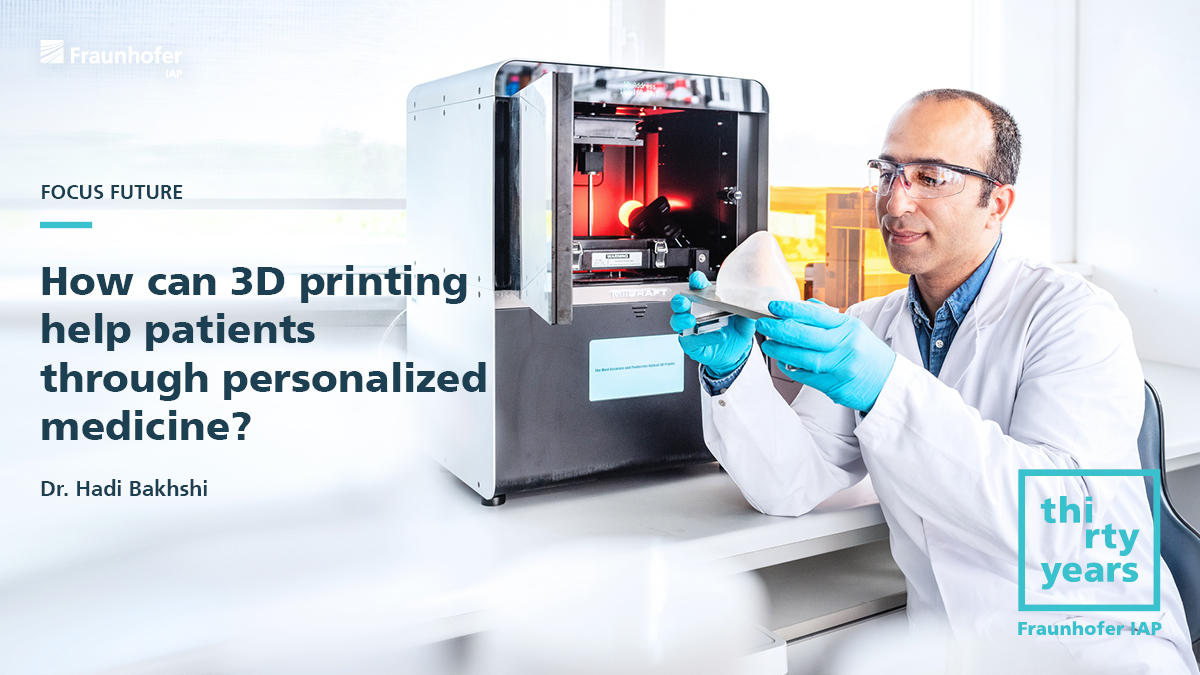
Personalized medicine has the potential to revolutionize the healthcare sector. Therapies will no longer follow uniform designs, but will be individually tailored for patients. Modern 3D printing technologies are part of this paradigm shift. They enable the production of for example heart valves, cardiac assist devices, artificial bones, tissue scaffolds, eyeglasses and even drugs that vary in shape, size, mechanical strength, biodegradability and drug release profile to meet the specific needs of patients. Here, the materials used for 3D printing play a key role. However, their performance is often still inadequate, necessitating further material developments. With novel polymers for artificial pericardial tissues, for example, we print precisely fitting implants that meet the mechanical requirements of a pericardium. We are convinced: New printable materials will help patients in the future through personalized medicine.
to the department "Biofunctionalized materials and (glyco) biotechnology"
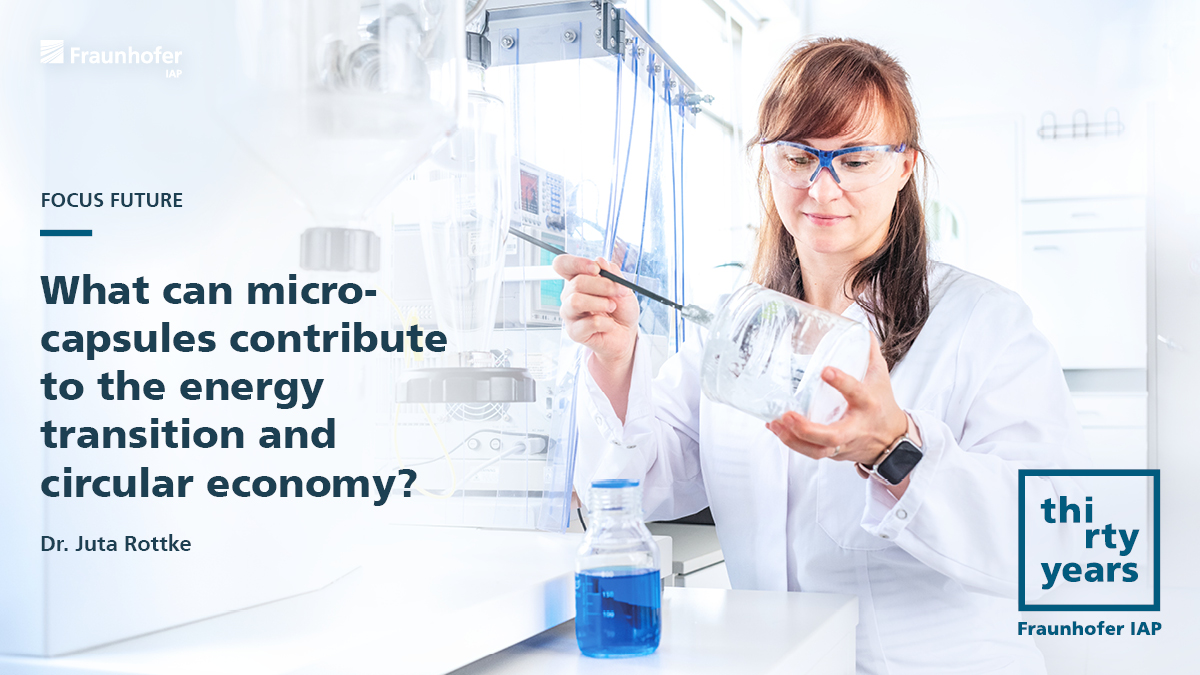
It's the inner values that count, but they have to be well packaged. What sounds like an empty phrase describes the technology of microencapsulation very well. Here, active ingredients are packaged in a protective shell, which enables a wide range of applications. Whether as a lubricant, biocide, adhesive, food additive, fragrance or latent heat storage, the range of applications for encapsulated materials covers almost all areas of life.
Microcapsules are used as additives to give a material new functions. For example, microcapsules filled with liquid lubricant can be incorporated into plastic-based components directly during production. This results in an extension of service life through wear protection as well as a reduction in energy consumption when using such components. Biologically active microcapsules containing microorganisms and other biological materials while retaining their properties are also being developed. A future application for this could be the recovery of raw materials from wastewater by encapsulated biomineralizing bacteria to enable sustainable recycle streams. And to reduce the input of microplastics into the environment, the microcapsules will be biodegradable after they have fulfilled their function.
to the department "Microencapsulation and polysaccharide chemistry"
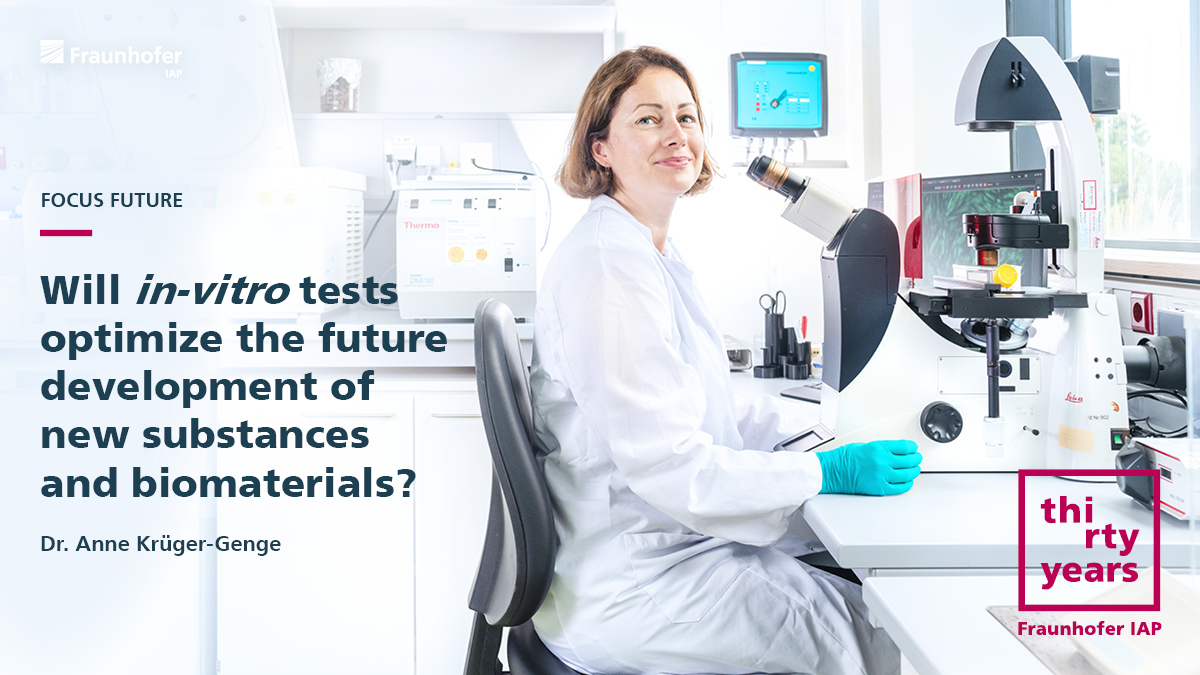
How active substances work and whether biomaterials are safe for humans can be tested in different ways. One approach are novel in-vitro tests – analyzes that take place in a test tube. For this purpose, we use human cells obtained from tissue and investigate their interaction with substances under artificial conditions. At the Fraunhofer IAP, we thus collect comprehensive information on efficacy, toxicity and deeper mechanisms, such as the effect on the immune system, the release of active substances or the appearance of inflammatory foci. In-vitro testing thus ensures a comprehensive and realistic analysis of the biocompatibility of polymers and drugs and active substances.
The close cooperation between chemistry, biology, veterinary medicine and the clinic also promotes the development and evaluation of new products. And, results from the laboratory are transferred to the clinic faster, more cost-effectively and with great patient safety. As a further prospect, the development of new in-vitro models will significantly reduce the number of necessary animal experiments in the coming years.
to the department "Healthcare, Biomaterials und Cosmeceuticals"
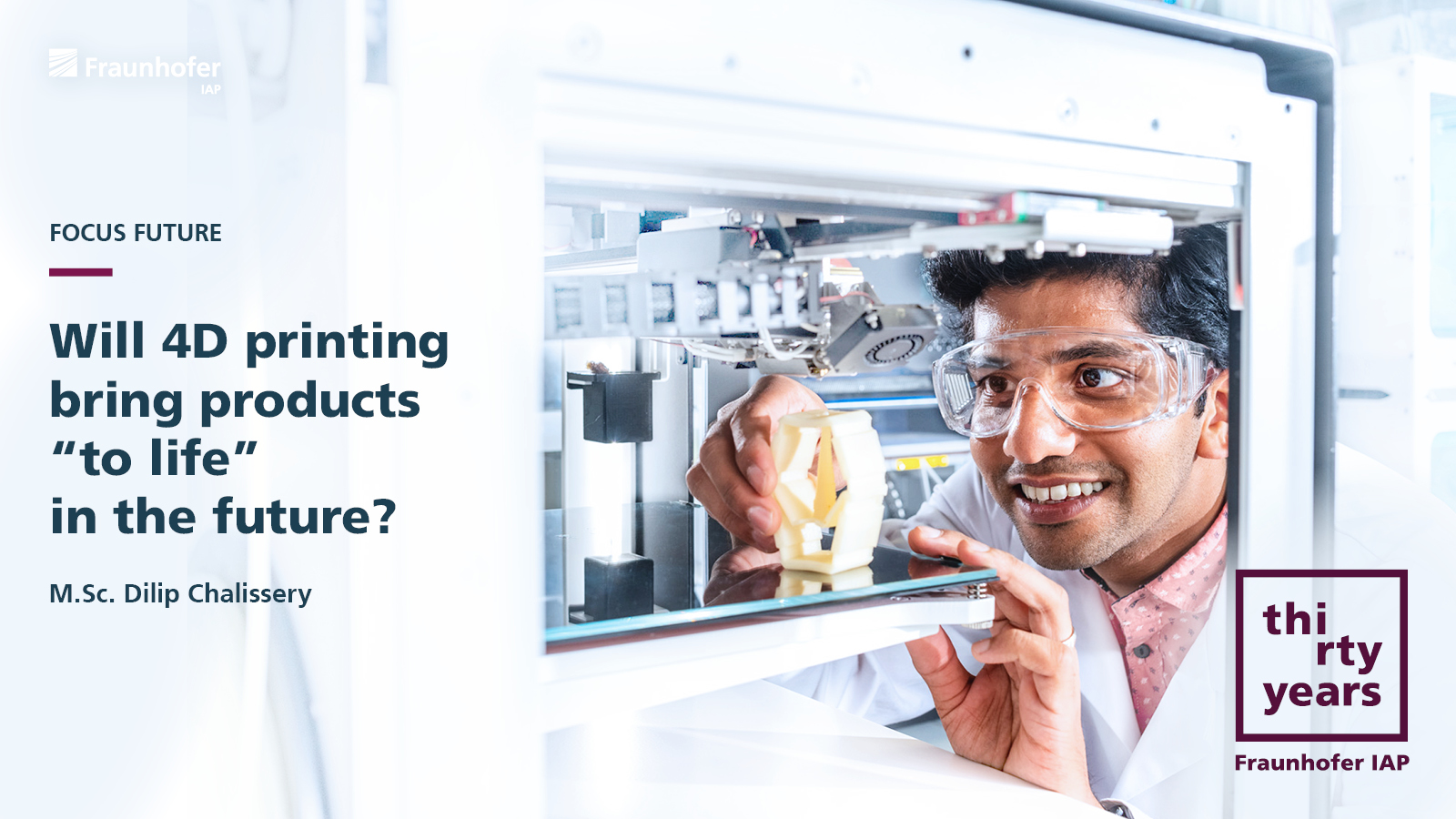
4D printing technologies have the potential to change our daily lives. In addition to the shape, 4D printing builds additional physical or chemical functionalities into the 3D structure - bringing objects "to life". 4D objects are produced in a similar way as any other 3D-printed shape. The material makes all the difference. Shape memory polymers, for example, change their shape or function in a predefined way due to the influence of heat, light or other environmental factors. There are many possible applications. Imagine clothing that becomes breathable or insulating due to the outside temperature and physical exertion. Components that repair fractures and cracks by themselves. Or buildings that adapt their insulating properties to the outside temperatures and thus save a lot of energy in the future. The application of bio-based polymers in 4D printing also enables full recyclability and reuse of the products.

Sugar is sweet. Everyone knows that. But "sugars" are also a variety of molecules that play an important role in organisms. From energy supply to cellular interactions and much more. Sugars are essential for life and also play a major role in diseases. For example, sugar molecules on the cell surface are involved in metastasis as well as in the invasion of cells by pathogens.
However, the chemical and biological diversity of sugars makes it possible to influence and control biological processes in a targeted manner through suitable modifications. Of course, medicine and health are the main focus here - for example, we are developing alternatives to conventional antibiotics or new biocompatible coatings for implants based on sugars in the form of so-called glycopolymers. Sugars are also very suitable for formulating active ingredients, which improves their bioavailability. One example is a project on the formulation and protection of RNA therapeutics with glycopolymers. A requirement for this are efficient manufacturing processes of our sugar-based polymers and the modification of sugars by enzymes. Glycobiotechnology will make far-reaching contributions to biomedicine in the future. The future is... sweet!
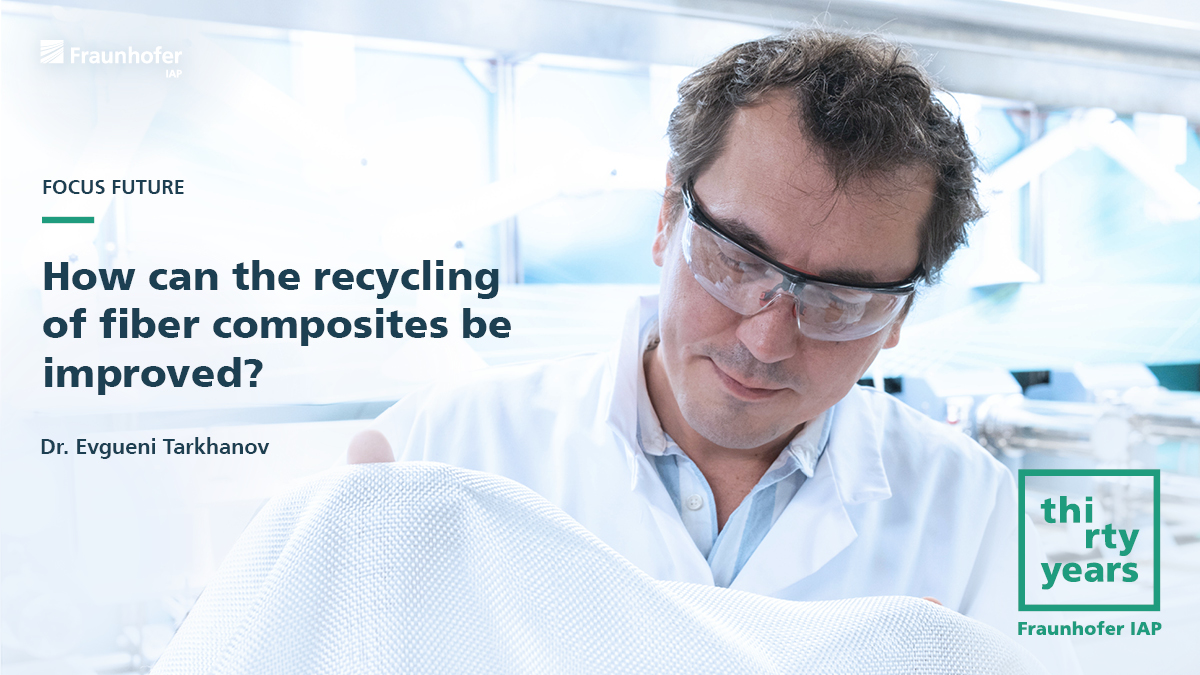
Fiber composites are used industrially on an annual scale of several million tons to make parts and components lighter and stronger. We encounter them every day in numerous lightweight applications that conserve resources and save CO2 (e.g. through increased energy efficiency) and tap renewable energy sources (e.g. wind power). With regard to the recycling process, however, fiber composites present us with major challenges, as the matrix and fibers usually consist of two different materials that are difficult to separate. In view of this, ongoing research activities at Fraunhofer IAP are concerned with the development of composites whose matrix and fibers are chemically identical. This will significantly simplify the recycling process. Based on the biopolyester polylactic acid (PLA) as matrix and special, newly developed PLA fibers with improved thermomechanical properties, we produce fiber-reinforced monocomponent materials for thermoforming as well as injection molding processes. Our goal is to develop recyclable fiber composites made from 100 percent bio-based PLA with advantageous mechanical properties to further advance the transition to a sustainable circular economy.